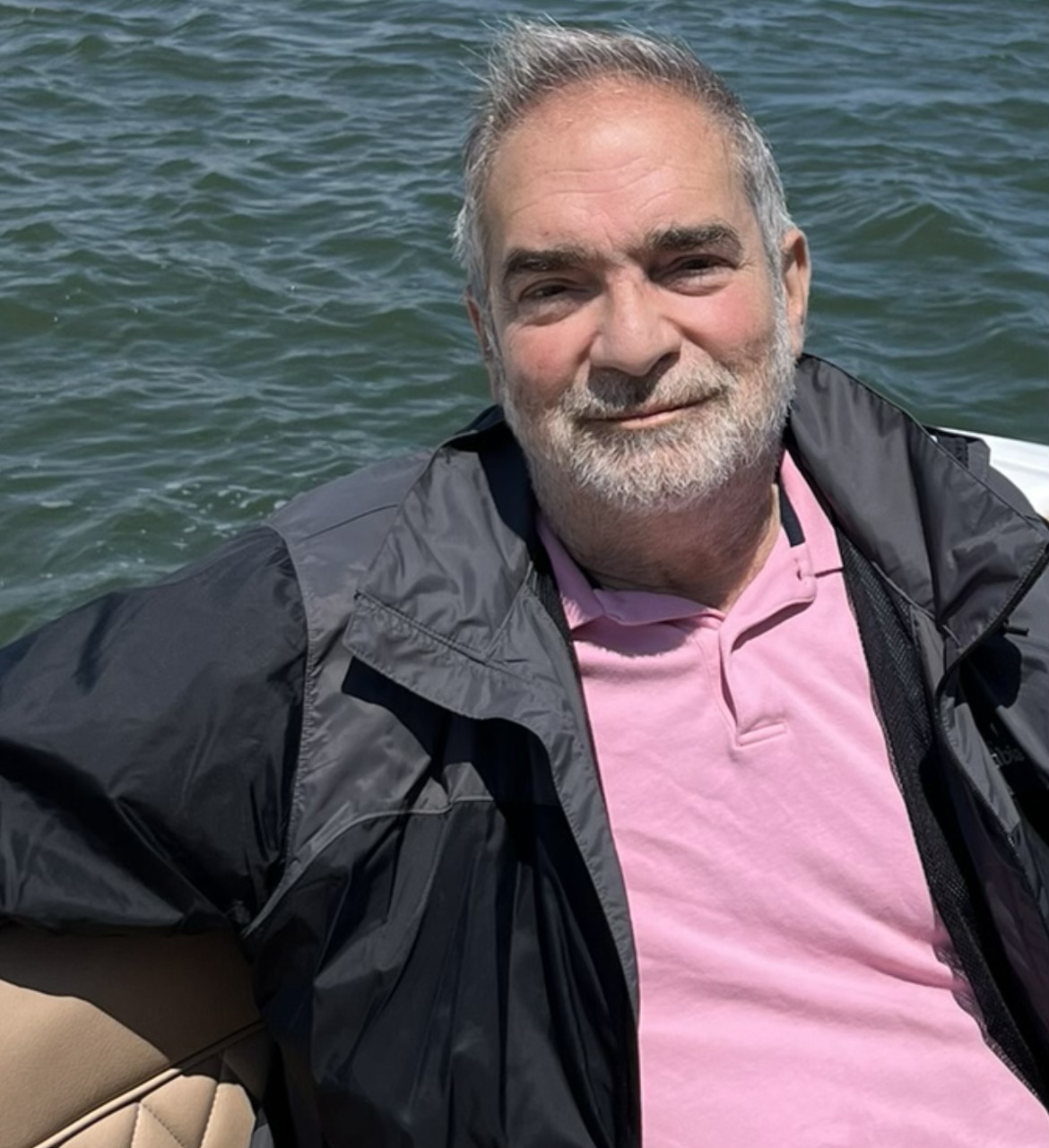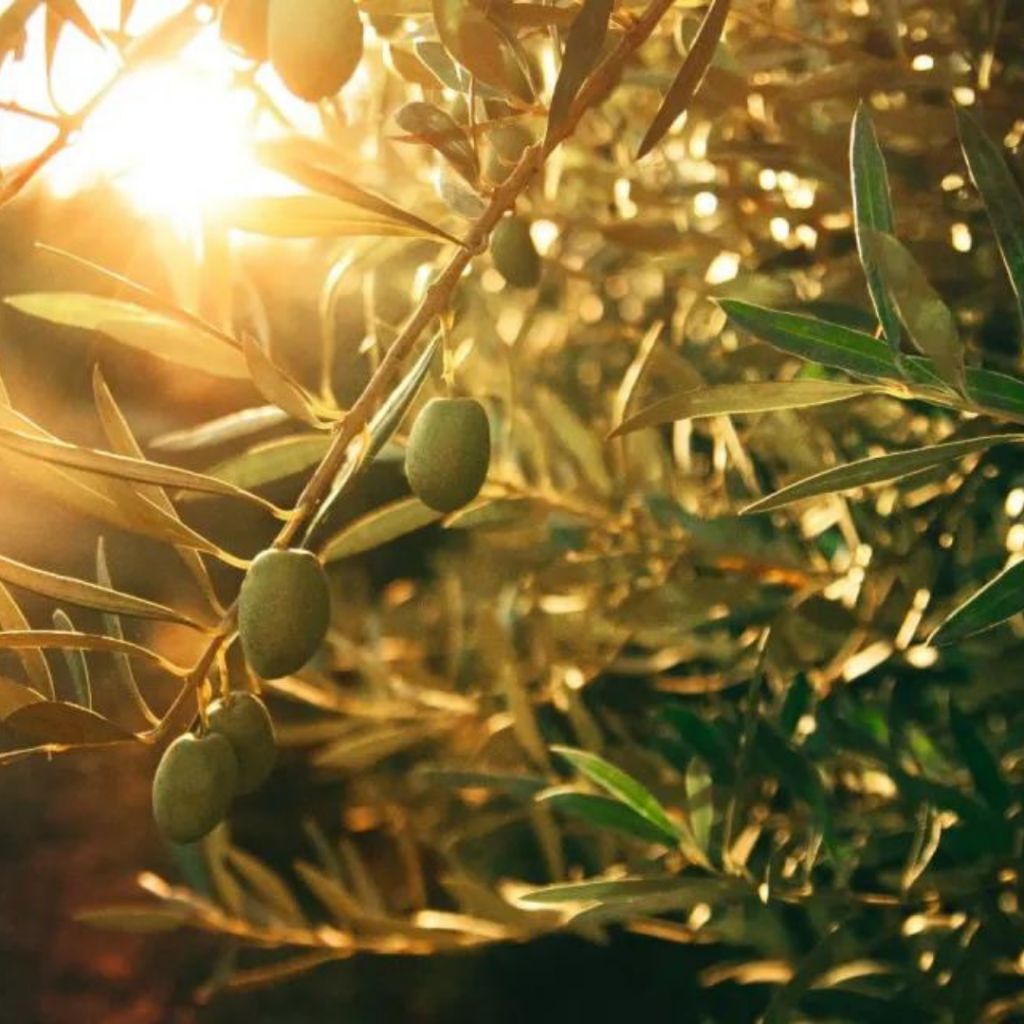It wasn’t until she died that I discovered my daughter’s obsession with chickpeas.
At shivah (the week of mourning), immediately after the burial, I thought I had heard someone refer to chickpeas in the conversations among some of the dozen friends who had carpooled up to Philadelphia from North Carolina. Hana had attended college there and then lived in North Carolina for two subsequent years. The house, the front porch and the side yard all teemed with visitors offering consolation, and it was difficult to hear anything, so I wasn’t sure what I’d overheard.
Shivah worked well for me when each of my parents died many years before, and it was working again.
I was in no shape to pay attention anyway. It was so hot—a sunny, muggy day in Philadelphia at the beginning of June. The synagogue had delivered four mourner’s chairs with back supports. They were not the traditional low-to-the-ground benches, thank God; these had backs. But like the backless ones, these too were lower than regular chairs. This technically fulfilled the requirement of Jewish law that mourners sit below those who are comforting them, so as to help the mourner remain in a destitute state (and presumably, to remind visitors to be sensitive to the mourner’s state of mind).
I spoke nonstop to an endless succession of visitors that day and for the whole week. I told them how I had been in a Cordoba hotel when I’d received my son Andrew’s call about Hana’s coma; how Nico, the tour guide, booked a train for me back to the airport in Madrid; how I hadn’t learned that the worst had happened until I’d landed in Charlotte, where Andrew had choked out the words, “She’s gone.”
Some mourners hate shivah, hate the food and the noise and the stress of being compelled to converse with an unrelenting stream of people precisely when you are beside yourself with grief.
Not me. Shivah had worked well for me when each of my parents died many years before, and it was working again. Now, day after day, people streamed in for morning services at 7:30 a.m. and evening services 12 hours later and for every moment in between. I was transported by the sense that there was this huge web of intersecting communities that cared about us, was grieving with us and were at least temporarily eager to help in any way they could. So I gave voice to my shock and pain and took comfort from the caring attention.
I was deluding myself, believing that in telling and re-telling my experience, I was actually doing well, moving out of the labyrinth of heaving and wailing, and onto the next stage. As if there are stages of grief that progress linearly. In truth, the next stage begins when the distractions of shivah end, and reality explodes like a gulp of terror: Hana will always be dead. There is no fixing this. If I were in my rabbinic role accompanying mourners going through what happened to me, I would have nothing to say. My daughter would never reach her 26th birthday.
But then, two months later, I foolishly went on the memorial page that my son Andrew had created out of Hana’s Facebook page. I was looking for Hana’s final posting, with which my colleague and friend Rabbi David Teutsch had masterfully concluded his eulogy at the funeral. She had written, “Hana Staub is so blessed to have the most beautiful and supportive family and friends. I love you all.” If any one of the hundreds of people in that chapel wasn’t sobbing already, that pushed them over the edge. The contrast between how well she had been loved and how powerless that love had been to sustain her in the depths of the darkness sucked the last remaining bit of air out of the funeral chapel. Her thoughtfulness was breathtaking—to declare, in the blackest of human moments, a public, blanket absolution, so that nobody could blame themselves, at least not on her account. She had also texted the following to her parents and two siblings: “I love you very, very much.”
I never found the quote on her Facebook page that day. I tried to scroll back through two months of postings, but I broke down after a couple of weeks of them. The memorial page had become a pilgrimage site, with entries daily by Hana’s close friends and acquaintances from all over the world, as if they were each visiting her grave and talking to her. Addressing her publicly. I started reading their postings about how they love her and miss her bright shining face, how they picture her in the shade of the maple tree that leans tall over her grave, and I broke down. I couldn’t bear to read about what a great friend she was, a beloved companion and mentor and activist, how she lit up any room she entered. Not after all I had heard from her over several years asserting how worthless she felt, how she couldn’t get out of bed again this morning. For most of the world, her death had immediately become the tragic loss of a young life with infinite promise. I felt as if they were all mourning a different person.
In the process, however, I came across several references to chickpeas. Chickpea butts, actually. Everybody knew, apparently, that Hana loved chickpeas, and apparently she had recently posted an update that she thought that chickpeas have cute butts. People in Asheville and Winston-Salem, Chapel Hill and Chicago, Indiana and Guatemala, Elkins Park and Samoa. Most everyone knew except me.
I wish I’d known about this when she was alive because I love chickpeas. I developed my taste for them in my childhood, on long late Saturday afternoons in the Bronx when I would accompany my father across the Grand Concourse to the synagogue that we called “Dovid Tov’s Shul.” We were actually active members of a very different kind of synagogue, the Young Israel of Claremont Parkway, a Modern Orthodox synagogue of which my father had been the founding president in his 20s. That was where we worshipped on Saturday mornings. It was a place of spirited and frequent singing, with lots of children running around, both up and down the sanctuary aisles and outside in the concrete alley behind the building. But the neighborhood was changing, and it was not safe to walk the 10 blocks back from the Young Israel at night after dark when the Sabbath ended. So instead, we walked across the street.
The Facebook memorial page had become a pilgrimage site, with entries by Hana’s close friends and acquaintances from all over the world, as if they were each visiting her grave and talking to her.
Dovid Tov was a friend of my older sister Mimi, so no one in my family thought of calling him Rabbi Tov. He was in his 20s and unmarried when he bought a two-family brownstone on Mount Eden Avenue across from Lebanon Hospital in the 1950s, knocked out the walls on the first floor, brought in 40 aluminum folding chairs and a curtain behind which the occasional woman could sit, put out a blue awning on the sidewalk and started a new synagogue. The Torah scroll was on loan, and the ark in which it was kept initially looked more like a rickety wardrobe. His father was a rabbi, and Dovid was just Orthodox, without any Modern. His hat had a wide brim. He pronounced his own name Toiv, in the Eastern European dialect. There was no singing in the service. And though, when he noticed me at all, he would speak to me in unaccented and fluent English, he addressed his tiny congregation in Yiddish, which I did not comprehend.
I did not like it there. There were no other children, and the metal chairs were cold and uncomfortable. Most of the men were deformed in one way or another. Broken teeth, limps, facial scars, dead eyes, gnarled, black stumps where there should have been fingernails. In contrast to Young Israel, none of them had names that my father saw fit to utter. They had survived the Nazi death camps, but nobody was going to mention that to me. All I knew was that they wore threadbare clothes that neither fit nor matched, had bad breath and didn’t make a big deal out of the fact that I was the only kid in shul. Occasionally, one of them would pinch my cheek before I could dodge out of reach, but otherwise, I had every reason to conclude that I was not exactly welcome.
Late on Saturday, after the afternoon service, you wait an hour until it gets really dark and you can see three stars in the sky, thus marking the end of the Sabbath and enabling you to begin the evening service. In that hour, there is a third Sabbath meal in the synagogue—cold dishes because you can’t light a fire or switch on electricity on the Sabbath: fish, honey cake, whiskey, and when I was lucky, orange soda and not ginger ale. In most other synagogues, there is lots of singing during the melaveh malkah or third meal—wistful Hebrew hymns bidding farewell to the Sabbath Queen lover or expressing the hope that this will be the final Sabbath in history since once the Messiah arrives, all time will be Sabbath time. But there was little singing at Dovid Tov’s shul, where my father alone could carry a tune. Instead, Dovid Tov would deliver a long drosha in Yiddish on the following week’s Bible portion.
The intent was that the men around the table should linger in this last Sabbath hour as if messianically, they didn’t have a care in the world—nothing better to do than eat the finest delicacies at their leisure while engaged in the most desirable of activities, studying the Holy Torah. In addition to being 11 years old and unable to understand the language being spoken, I found the food disgusting. Chopped herring in cream sauce. Gefilte fish pieces immersed in gelled broth that made me gag. The odors were pungent with a fishy overlay that reminded me of the stench outside of the fish stores on 170th Street on hot summer afternoons, with the frantic carp swishing in pails of water on the sidewalk.
The only Saturday afternoon staple that I could tolerate was the arbes, the Yiddish word for “chickpeas”. I loved the shape of these tiny balls. I would peel them one at a time with my teeth and chew on the coarse skins that slipped off the shiny, smooth globes underneath. I would hold each skinned pea between thumb and pointer and bite them in half, making a perfect hemisphere. They were gravelly and doughy like clay and tasted like earth. Sometimes, the homily went on and on, long after the appearance of three stars in the night sky. When that happened, I would be up half the night with cramps from a chickpea overdose.
I hadn’t eaten chickpeas very much since then, except when I was on meditation retreats, where they make frequent appearances. I assume that Hana grew intimate with them when she first adopted a vegan diet as a high school student. She was impressively thorough in her research about how a vegan eats a balanced diet to remain healthy. She subscribed to several health magazines and learned enough to advise me, solicited or unsolicited, about how to change my diet. She would have relied on chickpeas for her protein, just as the inhabitants of Jericho did 5,000 years ago.
It was six months after the funeral before I dared to go on a short, extended meditation retreat, only four days long, featuring a Jewish adaptation of Tibetan Buddhist mindfulness practice. Sure enough, at dinner on the first night, there were the chickpeas.
On retreat, everything is done mindfully — paying attention to your breath, your steps, your thoughts that arise. Eating mindfully means eating very slowly. First, you pick the morsel up off the plate with a utensil and look at it closely, appreciating its shape and color, thinking about the intricate web of life that went into its creation and the chain of people who cultivated and harvested it, who transported it, who prepared and served it. Then you smell it before you roll it around on your tongue, chewing slowly, noticing subtle changes in taste and texture as you masticate and swallow.
With this practice, there was no way to miss it. Chickpeas do have butts! The two cheeks curve around, nearly meeting, with a crack in between. They swing up into hips and the beginning of a waist, but that’s as far as it goes. And they are definitely cute — as cute as I remember them from Dovid Tov’s shul.
At first, this unspoken, heretofore unknown connection between Hana and me struck me as slightly mysterious, a posthumous gift. Sharon Begley, the science columnist for Newsweek, had reported the previous October that genetics researchers are discovering that the experiences of rats before they procreate affect their great-grandchildren, and so far, they had only tested through four generations. Switches in the DNA get turned on or off, and they stay that way through one generation after another.
When I read about this research the year before, Hana was still alive, though she wasn’t doing very well. Immediately, my mind raced to the inference, obvious to me: Perhaps I had been looking in all the wrong places for the causes of Hana’s mood disorders. Perhaps her childhood experiences were not implicated, nor the alignment of the constellations in the heavens at the moment of her birth, or the chemicals in the water supply. Hana’s fragile psyche might have been caused instead by the traumatic experiences, for example, of my mother’s mother — my Bubbe Yussy — who was sent alone, at age 17 on a steamship, steerage class, across the Atlantic to America without knowing a word of English before Bubbe had married and borne children, so that any genetic switches affected by that voyage would have affected her progeny. Bubbe certainly was not a happy well-adjusted human being. Or it might have been something that had happened to my Bubbe’s ancestors. Maybe they survived (before they procreated, thereby affecting their progeny) attacks by Cossacks in the pogroms of 1648/49, and Hana was suffering now. What if our entire line descended from an ancestor in the 17th—or 14th!—century who was gay and therefore miserable in a marriage he couldn’t avoid? Maybe our fates were truly as out of our own control as they seemed.
Following this line of thought, mindfully attending to my dinner at the retreat center, it occurred to me that it needn’t be trauma alone that we inherit from our ancestors. Hana’s love of chickpeas might have stemmed from my inadvertently mindful eating of them on Saturday afternoons, saving me from interminable boredom(and hunger)—a fact indelibly recorded on a tiny corner of one of my genes, which she then had the great good fortune of inheriting. Chickpea delight! After all, not everyone is in love with chickpeas.
After further contemplation, however, I had another intuition. Hana may have been my redeemer and the redeemer of my ancestors, retroactively. Time doesn’t necessarily travel in only one direction. The medieval philosophers whom I study did not even believe in the reality of time. Time in their eyes is the measure of motion; it is the way change is counted. It has no independent existence. Before the first moment of creation … well, there was no before, because there was nothing there to measure. Time, they argued, has no substance of its own.
I confess that this is not what you are supposed to be thinking about on a mindfulness meditation retreat. You are supposed to be engaged in a practice of paying attention to the breath (during sitting meditation) or the step (during walking meditation) by way of remaining aware of each present moment so that you can develop the ability to notice thoughts as they arise, and thus to respond to them wisely and compassionately. When you get distracted and caught up in a daydream — as you inevitably do — you’re supposed to notice that (eventually), and return to the awareness of the breath. Extended ruminations on the nature of time are not the reason that you drove four hours to the retreat center.
So I was transgressing when I recalled that, in the arguments of Maimonides and my other medieval teachers, God is not even aware of time, which has no existence of its own. God is aware of me in my essence but not aware of my journey through time and the changes wrought upon me in this ever-changing universe. God is not on the timeline.
The first time I took this medieval (and science fictional) perspective about time even a tad seriously was two years before Hana’s funeral, when I paid a visit to Rev, Richard Schoeller, a spiritualist minister in Huntington, NY, a medium to whom people speak who are no longer alive in their bodies. Richard knew absolutely nothing about me when I entered his office. My Bubbe Yussy appeared to him, and he reported that she was hugging me and thanking me for visiting the National Museum of the Holocaust in Washington, D.C., with Hana 15 years before. Except for her younger sister, Tante Masha, Bubbe’s entire family of origin was slaughtered in Poland and Russia by the Nazis. Richard heard Bubbe say that when Hana and I went to the museum, we effected a healing in the family, reuniting Bubbe with her long-murdered parents and siblings.
I have no idea how Richard hears or what he is hearing, but since then, I have not ruled out the possibility of healing the past — that maybe the past isn’t as dead and buried as we think. As a spiritual director or counselor, when I’m with someone who is suffering from negative experiences with a long-dead parent, for example, I’m not averse to encouraging them to return imaginatively to their childhood and to continue the interaction. Sometimes, the parent changes, apologizes, finally giving them what they always needed. Does this all happen exclusively in my client’s consciousness? I don’t know.
So perhaps I escaped drowning of boredom in Dovid Tov’s shul on a raft of chickpeas because Hana had found such delight in them. Which kept me there with my father in a roomful of Holocaust survivors who could barely look at me because I reminded them of their slaughtered children, but in whose memory I would decide to become a rabbi. Perhaps 17-year-old Bubbe Yussy gritted it out in steerage, uncomprehending as she must have been that her father had sent her to marry his brother on the Lower East Side of Manhattan, because on some level she too could experience Hana’s chickpea delight. If I live through this voyage and find my way up to New York after we dock in Philadelphia and marry an uncle I’ve never met, a great-granddaughter will someday be born, and she will light up the room with her love of chickpea butts. The same great-granddaughter who will visit the Holocaust Museum in Washington, D.C., and after I die, reunite me with my family, who will all have been slaughtered in the 1940s.
Who knows? Who knows in how many other ways Hana influenced my ancestors, or yours? The possibilities are infinite. There is so much we don’t know about the people we love most.
[A version of this essay first appeared on APIARY Online.]








2 Responses
So very moving, Jacob – thank you!
Dear Jacob,
What a lovely and moving essay! I love the whimsical speculation, healing as it is amidst disbelief. It was so terrific to come upon the essay in an email announcing discussions of burial v. cremation–and to spend some time with you and Hana, who I had first heard about at the course on spiritual direction at NYU .
love, carol